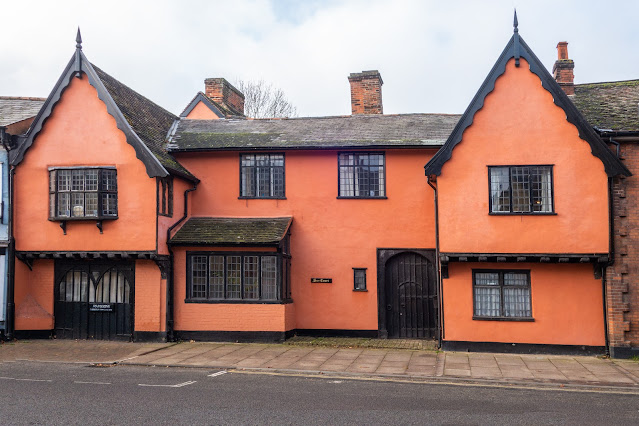Chipping Camden
Chipping Campden High Street is one of the most beautiful in the Cotswolds. With a wealth of history and architecture mostly built in Cotswold stone, the High Street is riddled with history, heritage, and intrigue. It was laid out in this format by Hugh De Gondeville, a close friend of King Henry II, so that is around mid 12C. De Gondeville quickly realised that the town needed a market to improve revenues for the King. So having been granted the Charter by the King, he set about laying out the street in the burgage style you see today. (A burgage was a town ("borough" or "burgh") rental property (to use modern terms), owned by a king or lord. The property usually, and distinctly, consisted of houses on a long and narrow plot of land)
The word “Chipping” is derived from the anglo-saxon word “Chepping” meaning “market”. Hence, we find Chipping Norton, Chipping Sodbury etc. This was also the derivation for “Cheapside” the big market in London.
Campden supported the Royalist cause but being so close to the crossing of two important routes – one used by Parliamentarians and the other by Royalists – things were rarely quiet. In January 1645 Colonel Henry Bard and his three hundred troops occupied Campden. Bard reported to Prince Rupert that he had arrived at ‘Cambden House, with my forces’ and they were ‘taking great pains, with spades, mattocks, and shovels’ to fortify the house. But in May that year, the garrison was withdrawn and marched westwards to Evesham where they joined the King’s army on its way towards Worcester. Before leaving, the house, built less than 40 years before, was set on fire and burned to the ground on the orders of Prince Rupert, it is thought.
This tomb of Sir Baptist Hicks and his wife is possible one of the largest I have ever seen in a church.
Sir Baptist Hicks gave money for the pulpit and lectern and gave £200 to re-roof the nave.
Overall, a wonderful place to visit with all its history. Lunch was had in a pub/ cafe overlooking the High Street. A wonderful way to finish our visit.
The word “Chipping” is derived from the anglo-saxon word “Chepping” meaning “market”. Hence, we find Chipping Norton, Chipping Sodbury etc. This was also the derivation for “Cheapside” the big market in London.
Sir Baptist Hicks (1550/51-1629) was a very wealthy London merchant who gained a knighthood and other honours from James I, presumably because he loaned the king thousands of pounds when he came to the throne in 1603. He owned land and property all over England and acquired the Manor of Campden in 1612.
He made many benefactions to Campden including the Almshouses, the Market Hall and gifts to the Church which included the pulpit and the lectern.
From the church, you can see the ruins of Campden House, a large country mansion and formal gardens built by him in around 1612. Sir Baptist Hicks died in 1629 and bequeathed Campden House, Campden and all its contents to his elder daughter Juliana, who had married Lord Edward Noel in 1605.
It was in 1627 that Sir Baptist Hicks built a market hall on the High Street of this pretty north Cotswold town. The hall was intended to provide shelter from the elements for merchants and farmers selling goods like cheese, butter, and poultry (not, as you might think, wool). The side walls were open arches to allow light, and customers, access to the market stalls.
The floor of the market hall was made of simple cobbles, now worn smooth by the passage of time and thousands of feet. The building is listed Grade I for its historic importance.
The Grade II listed entrance gates to Old Campden House
Sir Baptist Hicks had the Almshouses built in 1612 at a cost of £1,000 to provide accommodation for six poor men and six poor women who were allowed a weekly allowance of 3s. 4d. and “a frieze gown and a ton of coals and a felt hat” annually. They still provide homes for twelve elderly people and remain much as they were, apart from the addition of a modern kitchen and bathroom rather than the original “one up, one down” layout with a shared outside privy!
In the centre of the main block of the Almshouses is this carving of the coat of arms of Sir Baptist Hicks, with its Latin motto Nondum metam, which means something like – ‘I have not yet reached my goal’ or ‘I am not yet finished’.
At one point in the High Street, we found something I had never seen before. In fact, I had not heard of them either. It was a Cart Wash.
The cart wash is located opposite the Almshouses. It dates from the early 1800s and replaced a pond at the bottom of Church Street, originally used for the purpose of allowing a cart to wash its wheels and stand in water, so that wooden wheels could expand in dry weather and remove the mud in severe weather. If wheels were allowed to dry out the spokes loosened and the iron tyres on the wheels would fall off.
The Anglican Church of St James at Chipping Campden was built in the 15th century incorporating an earlier Norman church. It is a grade I listed building. The influence of Sir Baptist Hicks can be seen here.
So, to finish, an image of a newer property, made to blend into the area.
Overall, a wonderful place to visit with all its history. Lunch was had in a pub/ cafe overlooking the High Street. A wonderful way to finish our visit.


















Comments